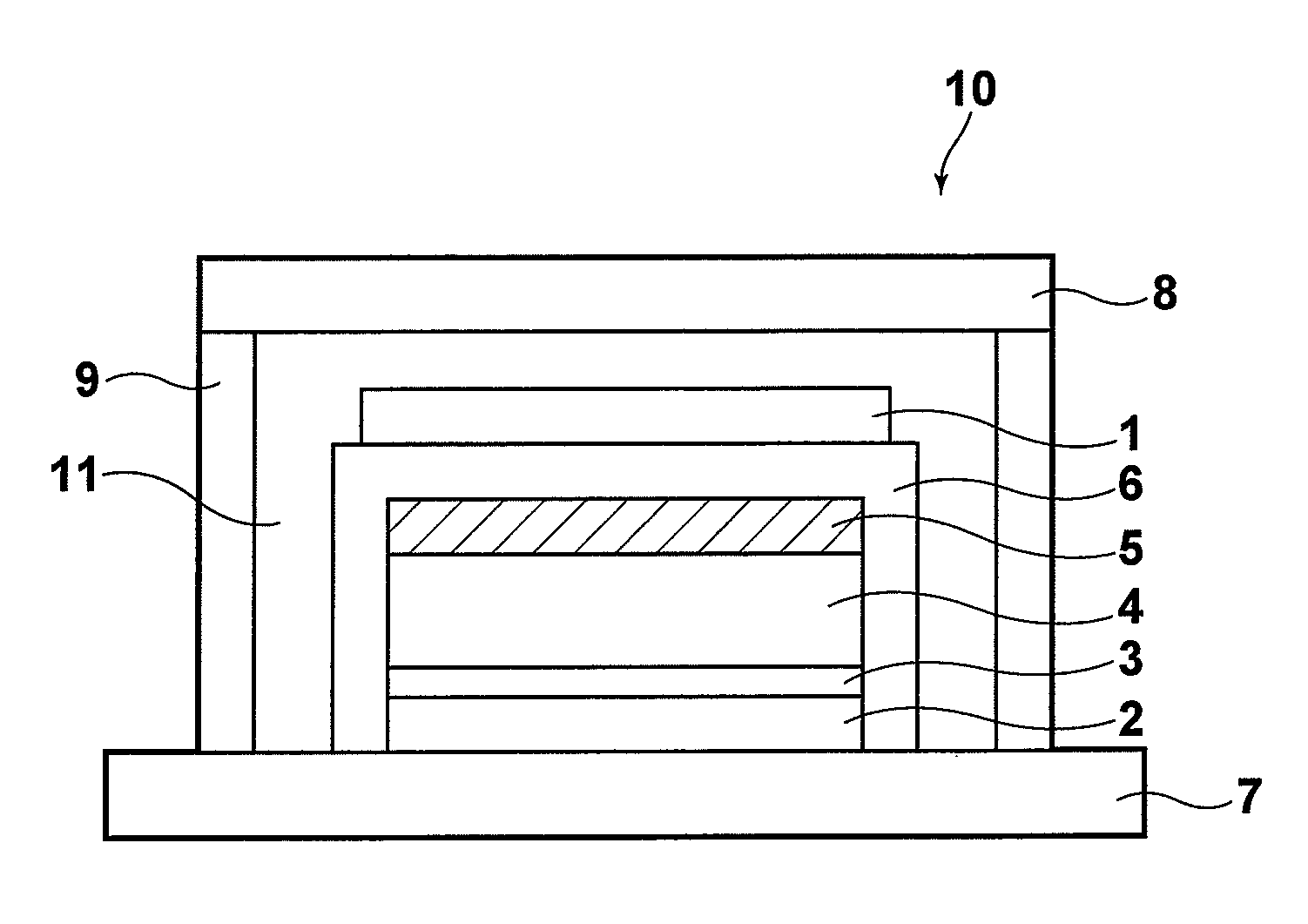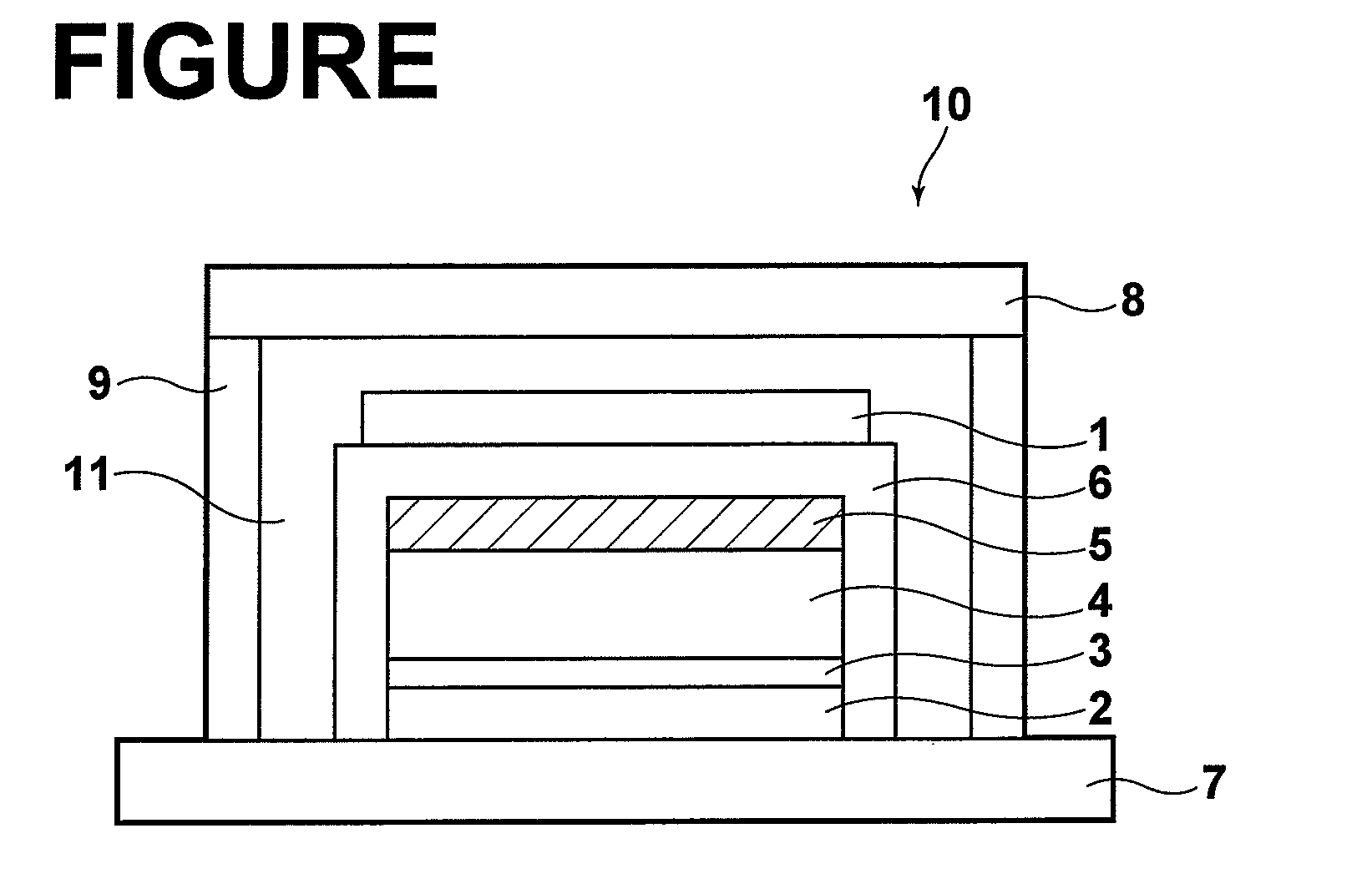Radiation detecting system
a technology of radiation detection and detection system, applied in the direction of instruments, discharge tube luminescnet screens, conversion screens, etc., can solve the problems of deterioration of s/n, noise, and amorphous layer in the amorphous layer
- Summary
- Abstract
- Description
- Claims
- Application Information
AI Technical Summary
Benefits of technology
Problems solved by technology
Method used
Image
Examples
embodiment 1
[0064]A charge transfer layer of antimony sulfide (Sb2S3) was formed in thickness of 2 μm on a substrate on which switching TFT's were arranged. A crystallization suppressing layer 0.15 μm thick was formed by depositing Se raw material containing As in 3%. A 1000 μm thick recording photoconductive layer including amorphous Se was subsequently formed by depositing an Se raw material containing Na at 10 ppm.
[0065]Then a fullerene-containing organic polymer layer was formed. As the fullerene, fullerene C60 (“nanom purple” (C60) manufactured by Frontier Carbon Inc.) was employed. 2.5 wt % of poly carbonate resin (PCz) (Iupilon PCZ-400 manufactured by “Mitsubishi Gas Chemical Company Inc.”) and the fullerene C60 which was 30 wt % of the PCz were dissolved in o-dichlorobenzene, whereby a coating solution was prepared. An organic polymer layer 0.2 μm thick was obtained by forming film on the recording photoconductive layer by spin coating the coating solution and evaporating the solvent wi...
embodiment 2
[0066]A radiation detecting system was produced in the same manner as the embodiment 1 except that oxidized fullerene C60 was employed instead of the fullerene C60.
embodiment 3
[0067]A radiation detecting system was produced in the same manner as the embodiment 1 except that the following ETM1 was employed instead of the fullerene C60.
[0068]
PUM
| Property | Measurement | Unit |
|---|---|---|
| thickness | aaaaa | aaaaa |
| thickness | aaaaa | aaaaa |
| thickness | aaaaa | aaaaa |
Abstract
Description
Claims
Application Information
 Login to view more
Login to view more - R&D Engineer
- R&D Manager
- IP Professional
- Industry Leading Data Capabilities
- Powerful AI technology
- Patent DNA Extraction
Browse by: Latest US Patents, China's latest patents, Technical Efficacy Thesaurus, Application Domain, Technology Topic.
© 2024 PatSnap. All rights reserved.Legal|Privacy policy|Modern Slavery Act Transparency Statement|Sitemap



